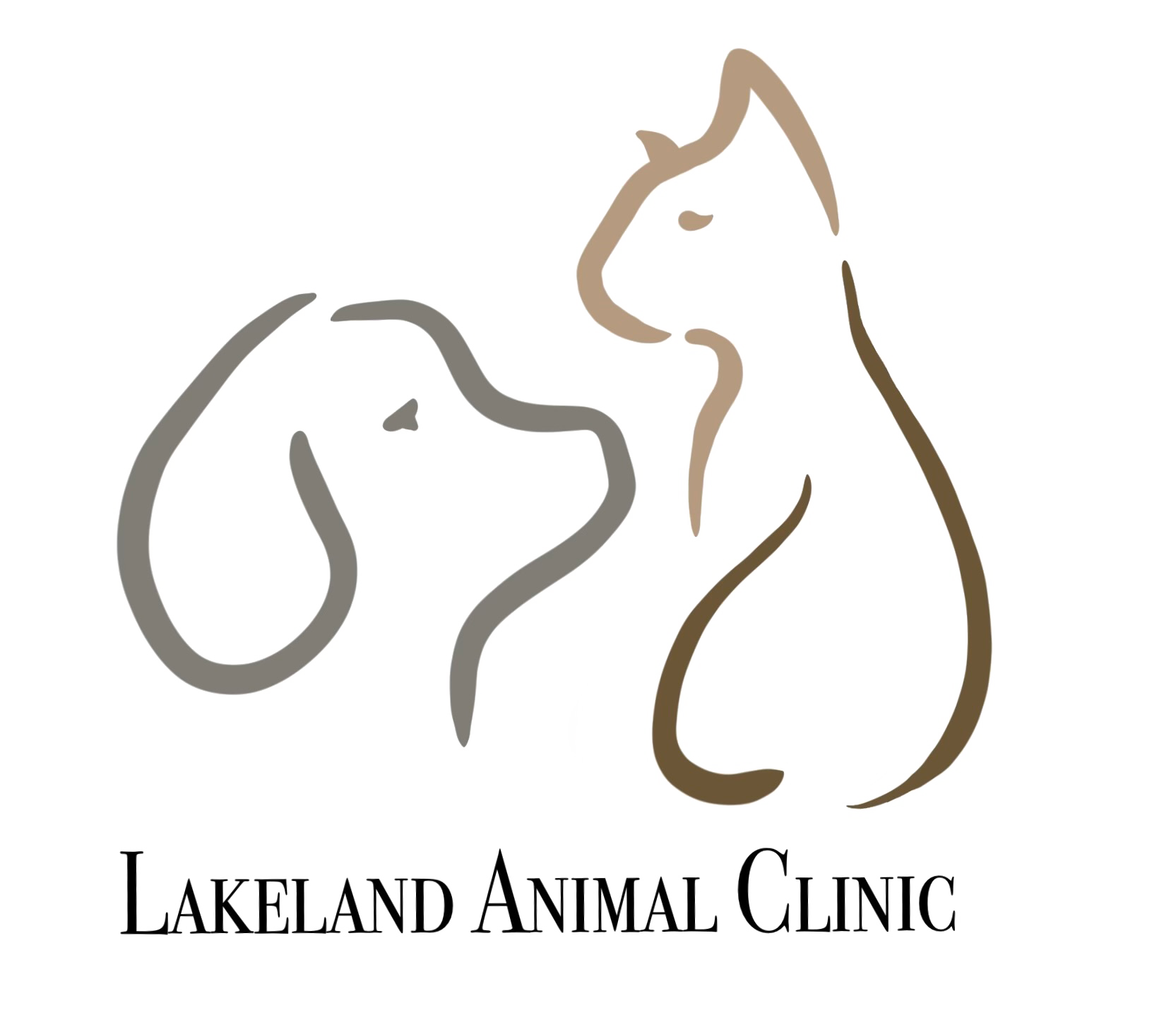How to Identify Lameness and Limping in Pets


How to Identify Lameness and Limping in Pets: A Guide for Euclid Pet Owners
If you’ve noticed your dog or cat suddenly favoring a leg, hesitating to jump, or walking with an unusual gait, it’s natural to feel concerned. Lameness and limping in pets can be alarming, especially when the cause isn’t immediately obvious. At Lakeland Animal Clinic, located at 20690 Lakeland Blvd, Euclid, OH 44119, we understand just how distressing it can be to see your companion in discomfort. Whether you’re searching for pet diagnostics in Euclid or simply want to understand why your pet is limping, this guide will walk you through the common signs, underlying causes, and next steps for getting your pet back on their feet.
In this blog, you’ll learn how to spot the early signs of lameness in dogs and cats, discover what can cause your pet to limp, and find out when it’s time to schedule an appointment with our compassionate veterinary team. We’ll also touch on local resources, such as wellness examinations and advanced diagnostics available right here at Lakeland Animal Clinic. If you’re looking for a vet near me who truly cares for your pet’s well-being, you’re in the right place.
Recognizing Lameness and Limping in Dogs and Cats
It’s not always easy to pinpoint when a pet is experiencing discomfort in their limbs. Dogs and cats are experts at hiding pain, especially in the early stages of an injury or health problem. However, attentive pet owners may notice subtle changes in movement or behavior that signal something is wrong. Common signs that your pet may be suffering from lameness or limping include favoring one leg, holding a limb off the ground, or a change in their usual walking pattern. Some pets might have difficulty standing up after resting, show reluctance to jump onto furniture, or hesitate on stairs. In more obvious cases, you might see your pet hopping, dragging a limb, or vocalizing when trying to move.
Other symptoms that often accompany lameness in dogs and cats are licking or chewing at the affected limb, swelling, heat, or even visible wounds. You might observe your pet becoming less active, withdrawing from play, or appearing irritable when you touch certain areas. In some cases, the lameness can appear suddenly; in others, it may develop gradually over time. Paying attention to these early warning signs is important for ensuring prompt evaluation and treatment.
Subtle Signs of Pet Limping
Not all limping looks the same. For example, some cats with arthritis may simply begin jumping shorter distances or stop climbing altogether. Dogs with joint pain might lag behind on walks or shift their weight awkwardly when standing. Even a slight head bob while walking can signal front limb discomfort, while a raised tail or hip drop may mean trouble in the hind legs. When you notice these patterns, it’s a good idea to jot down when the symptoms began and whether they’re getting worse or improving with rest. This information will help your veterinarian in Euclid make a more accurate diagnosis and tailor treatment to your pet’s needs.
Understanding the Causes of Lameness in Dogs and Cats
Lameness in pets can have a wide range of causes, from everyday strains and sprains to more serious health problems. In young, active dogs, injuries from play or roughhousing are common culprits. Cats may injure themselves during a fall or by getting their claws snagged. In other cases, lameness may be linked to underlying medical conditions like arthritis, hip dysplasia, or even infections.
Acute injuries are a frequent cause of sudden pet limping. These injuries might include soft tissue strains, torn ligaments, or broken bones. Pets can also develop lameness due to embedded foreign objects (such as thorns or glass) or from bites and stings. Chronic conditions, such as osteoarthritis, tend to produce more gradual, progressive lameness. In older pets, degenerative joint disease and age-related wear on the joints are leading factors, especially as our Cleveland area winters can make arthritis symptoms more pronounced.
Other health issues, including Lyme disease and certain autoimmune conditions, can also result in intermittent or shifting lameness. In rare cases, tumors or nerve injuries may be responsible. Environmental factors, like icy sidewalks or rough play in dog parks around Euclid, can increase the risk of injury as well.
When Lameness Might Signal a Bigger Problem
While many cases of pet limping are the result of minor injuries, persistent or severe lameness should never be ignored. If your pet’s symptoms last more than a day or two, worsen over time, or are accompanied by swelling, fever, or open wounds, it’s time to consult a veterinarian near me for a full evaluation. Early intervention can make all the difference in your pet’s comfort and long-term mobility.
Professional Diagnosis and Treatment Options for Pet Limping
When you bring your pet to Lakeland Animal Clinic for lameness or limping, you can expect a thorough and compassionate approach. Our veterinary team begins with a comprehensive physical examination, gently assessing your pet’s joints, muscles, and paws for signs of injury or pain. We may ask about recent activities, any known accidents, and changes in your pet’s routine. Pet diagnostics in Euclid play a critical role in identifying the root cause of lameness. Depending on the findings, we may recommend digital radiology or advanced imaging to check for fractures, arthritis, or soft tissue injuries. Our digital radiology services allow us to examine your pet’s bones and joints quickly and accurately.
In some cases, our team may utilize Digatherm thermal imaging to identify areas of inflammation that aren’t visible to the naked eye. If infection or systemic disease is suspected, our in-house pet diagnostic laboratory provides rapid bloodwork and analysis to guide treatment decisions.
Treatment options for lameness in dogs and cats depend on the underlying cause. For soft tissue injuries, rest, anti-inflammatory medications, and physical therapy are common first steps. Chronic pain from arthritis may be managed with a combination of pain relief, joint supplements, and class 4 laser treatment, which is designed to promote healing and reduce discomfort without surgery. In more serious cases, such as torn ligaments or fractures, surgical intervention may be necessary. Our clinic offers a full spectrum of soft tissue and orthopedic surgeries, always tailored to your pet’s individual needs and comfort.
Managing Pain and Promoting Recovery
No pet should have to live with untreated pain. Our pain management services are available to help your pet recover faster and enjoy a better quality of life. This may involve a mix of medications, laser therapy, and lifestyle adjustments. Throughout the recovery process, our veterinary professionals provide ongoing support and follow-up to ensure your pet’s progress is on track.
Home Care and Prevention: Supporting Your Pet’s Mobility
While some causes of lameness and pet limping can’t be prevented, attentive home care can reduce your pet’s risk and support their recovery. If your pet is recovering from an injury, confine them to a safe space to limit jumping and running. Use ramps or steps to assist pets with arthritis in climbing onto furniture or into vehicles. Regular, low-impact exercise, such as gentle walks or supervised play, helps maintain joint health and muscle strength. Keep your pet’s nails trimmed to prevent snagging and slips, especially on hardwood floors.
Nutrition plays an important role in joint health, particularly for senior pets. Look for foods rich in omega-3 fatty acids and consult your veterinarian about appropriate supplements. Maintaining a healthy weight is critical, as excess pounds place additional stress on your pet’s joints and can exacerbate lameness. For older pets or those with chronic conditions, regular senior pet care visits at Lakeland Animal Clinic allow for early detection and management of mobility issues before they become severe.
Creating a Safe Environment
Preventing injuries begins at home. Ensure your living space is free from hazards like slippery floors, sharp objects, and obstacles that could trip your pet. During the colder months in Euclid and surrounding communities, wipe your pet’s paws after walks to remove ice, salt, and debris that can cause irritation or injury. A little vigilance goes a long way in protecting your pet’s mobility and comfort.
When to Call Lakeland Animal Clinic: Knowing the Right Time for Veterinary Care
Deciding when to bring your pet to the veterinarian for limping or lameness can be challenging. As a rule of thumb, any sudden, severe, or persistent limping warrants prompt attention, especially if your pet is in visible pain, unable to bear weight, or has swelling, bleeding, or wounds. If your pet stops eating, shows signs of fever, or becomes withdrawn, these are additional red flags. For senior pets, even mild lameness should be evaluated, as it may signal underlying arthritis or more serious health concerns.
At Lakeland Animal Clinic, our veterinarians are equipped to provide prompt, thorough pet diagnostics in Euclid for pets of all ages. Pet owners who notice subtle changes in their companion’s movement, reluctance to play, or recurring lameness are encouraged to schedule an appointment. Our team is committed to early detection, compassionate care, and personalized treatment plans tailored to your pet’s needs.
What to Expect During Your Visit
When you arrive for your pet’s appointment, our veterinary professionals will review your pet’s medical history, perform a physical examination, and may recommend further diagnostics as needed. We pride ourselves on clear communication, answering your questions and explaining each step of the process. If specialized treatment is required, we’ll guide you through your options and provide ongoing support throughout your pet’s recovery.
Compassionate Care for Lameness and Limping: Schedule Your Appointment Today
Spotting the signs of pet limping is the first step toward helping your companion enjoy an active, pain-free life. At Lakeland Animal Clinic, we’re proud to serve Euclid and surrounding communities with advanced veterinary diagnostics, comprehensive wellness care, and a commitment to your pet’s comfort. If you’re searching for a vet near me who offers quality veterinary services near me, our team is here to help.
Don’t let lameness in dogs and cats go untreated. Schedule a wellness examination or pet diagnostics in Euclid today by calling (216) 731-5536 or visiting our clinic location. Our veterinarians are dedicated to providing the highest standard of care, ensuring that you and your pet can enjoy many happy, healthy years together. If you have concerns about your pet’s mobility or notice any signs of lameness, reach out to Lakeland Animal Clinic for expert advice and compassionate support.
This blog is intended for informational purposes only and does not replace professional veterinary care. Always consult your veterinarian for personalized medical advice or if your pet is experiencing symptoms of lameness or limping.



















